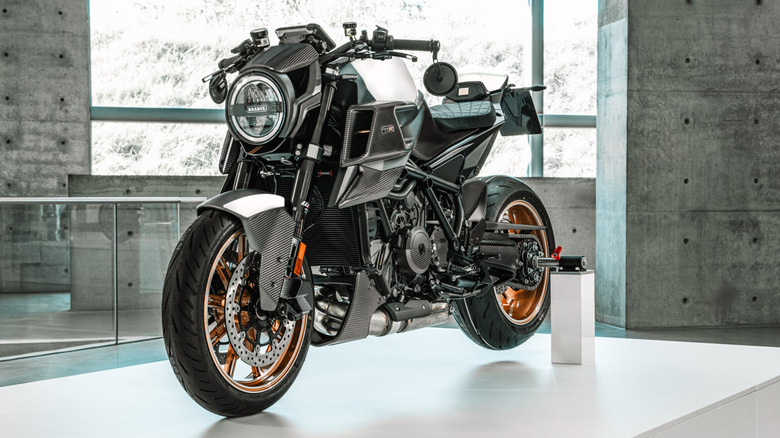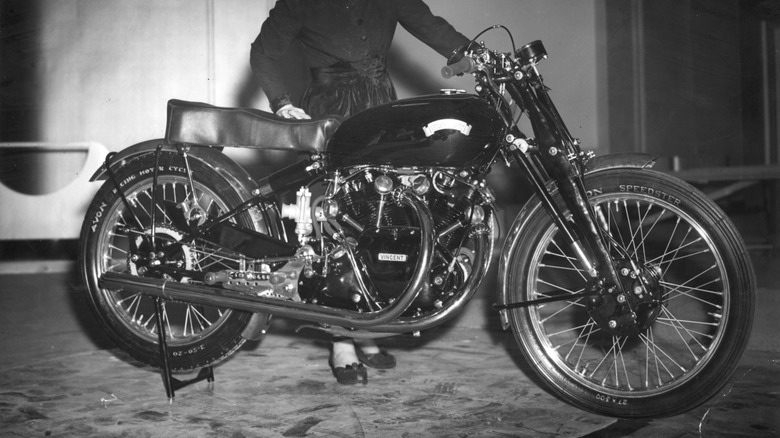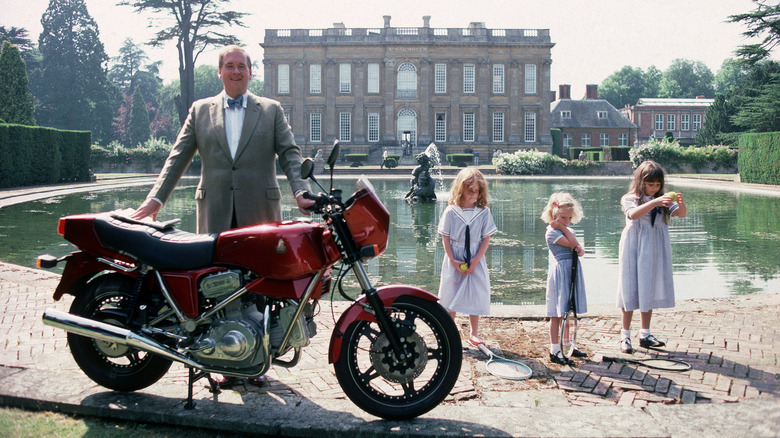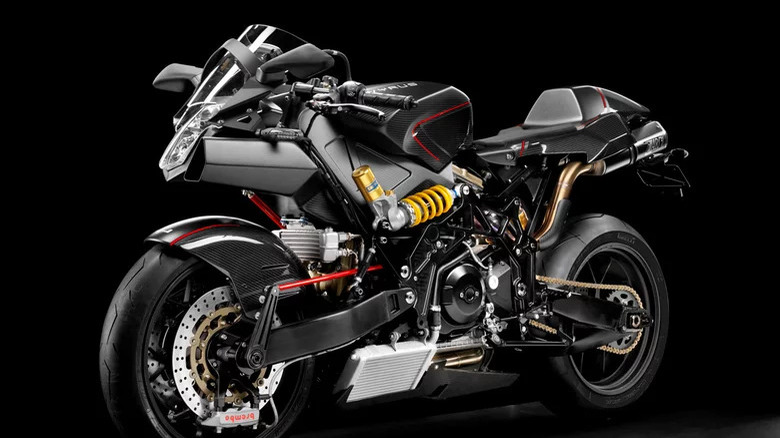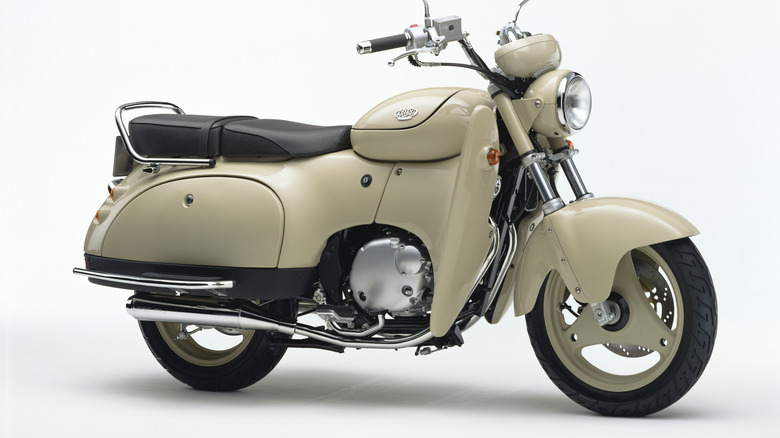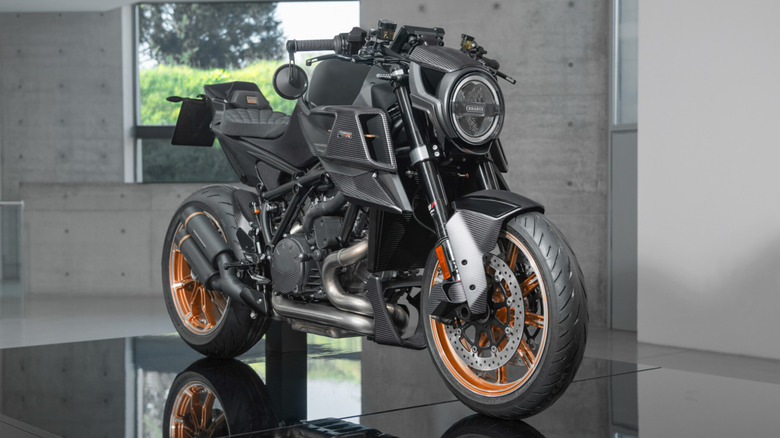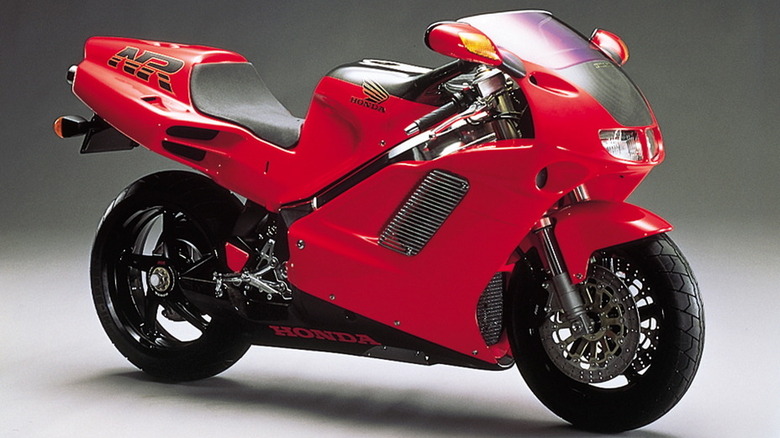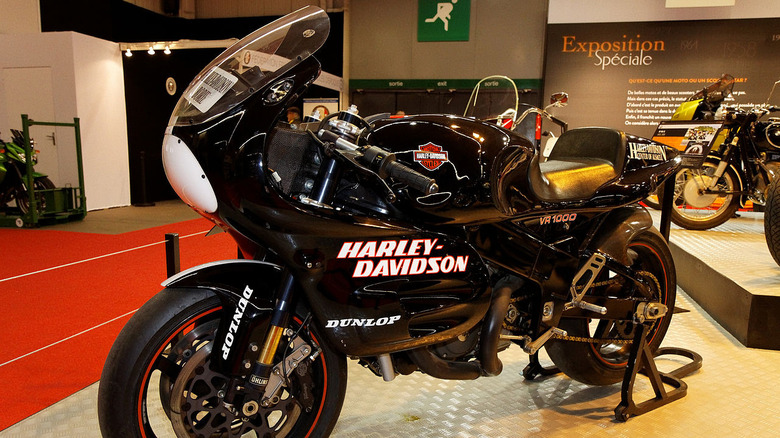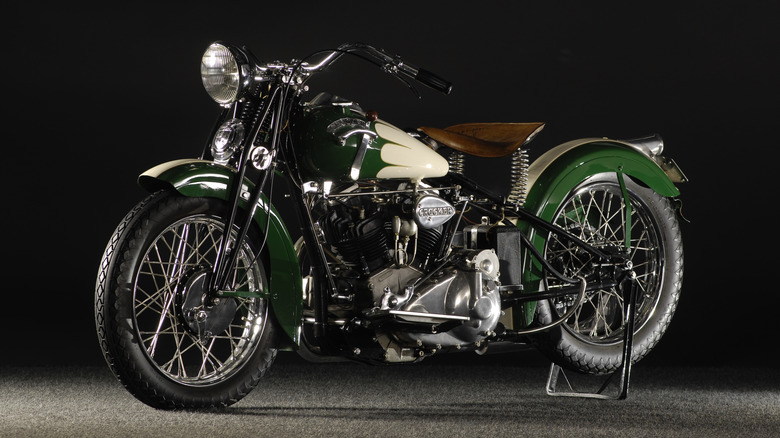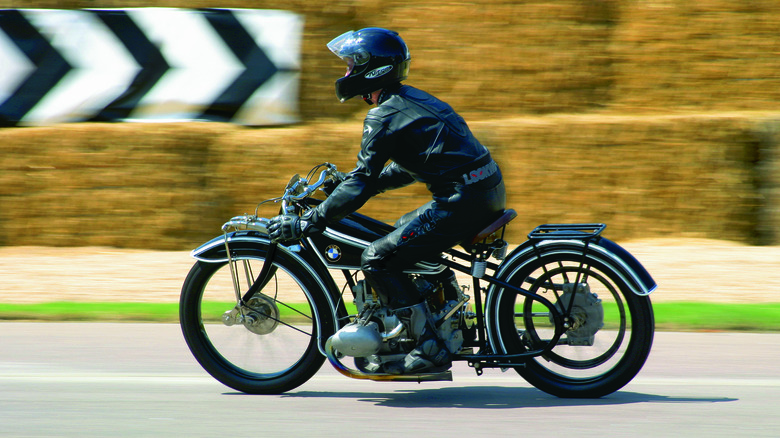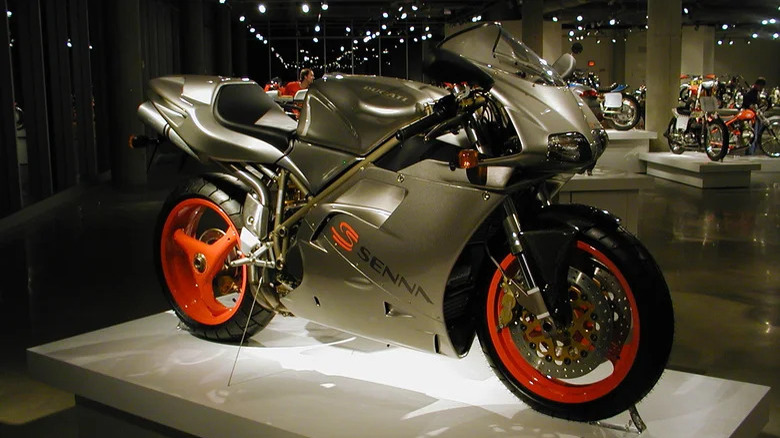10 Of The Rarest Motorcycles Ever Built
There are many reasons why a motorcycle might be rare, and not all of them are positive. Sometimes, they're built as low-volume showcases of what a manufacturer can achieve, only ever being intended to sell in very small numbers but designed to earn the maximum amount of column inches in the press and in enthusiast newsletters. Others market their rarity as an explicit selling point, being billed as luxury accessories in the same way as an ultra-expensive watch.
For every low-volume special, however, an equal number of motorcycles are rare simply because they didn't sell well enough. Sometimes, they suffered from significant flaws, eye-watering price tags, image problems, or a mix of all three. Often, these commercially unsuccessful models are deliberately written out of history by their manufacturers, although a few take on unlikely second lives as cult collectors' favorites. Whatever the reason for their low production numbers, these motorcycles are all extremely rare, to the point where even many seasoned motorcycle enthusiasts will have never seen one in real life. None, however, are built as one-offs — there are more than one of each, even if in some cases total production only ever reached low double digit figures.
Vincent Black Lightning
Any Vincent-branded motorcycle is now a rarity, but few are rarer than the Black Lightning. It's thought that just 33 examples of the model were built, although some claim that even fewer examples actually left the factory. Of those, just 19 are said to survive in original condition today. The Black Lightning was first unveiled in 1948 sporting unprecedented performance — and an unprecedented price tag. It was the latter that kept it exceptionally rare, with only a handful of examples commissioned every year until it was discontinued in 1952.
Most examples were sold to well-heeled motorcycle racers, many of whom saw success in competition on the Black Lightning. It could pull clean ahead from any other motorcycle on the circuit, with its performance credentials asserted beyond doubt when it clinched the world speed record in 1948. Rider Rollie Free took the Black Lightning to more than 150 mph on the Bonneville Salt Flats to achieve the title, famously hanging off the back of the bike and wearing nothing but swimming shorts in order to be as aerodynamic as possible.
Hesketh V1000
To say that the origins of the Hesketh V1000 were unconventional would be an understatement. The company was founded by an eccentric British aristocrat, Lord Thomas Alexander Fermor-Hesketh, who had previously launched a Formula 1 team from an outbuilding on the grounds of his mansion. That F1 team saw very brief success, winning the 1975 Dutch Grand Prix, but withdrew from the sport the following year. Lord Hesketh then decided to pivot his small band of engineers towards developing a motorcycle, with the plan to revive the British superbike segment that had all but disappeared in the preceding decades.
The Hesketh F1 team had used the famous Cosworth DFV engine in competition, and the motorcycle engine took heavy inspiration from that engine. It was so similar, in fact, that some parts on the Hesketh prototype engine were interchangeable with the DFV. The motorcycle was launched as the V1000 in 1980, but soon after the launch it became clear that this engine would cause major problems for the company.
The fledgling manufacturer built 139 V1000 motorcycles, most of which suffered significant engine problems that saw them sent back to the factory for repairs. It would turn out that, in adapting the engine to avoid infringing on patented designs, the Hesketh engineers would create a design flaw that led to the engine consistently overheating. The V1000's image among buyers subsequently tanked, and by the time Hesketh had engineered a fix, the company had already run out of money.
Vyrus 987 C3 4V
Vyrus founder Ascanio Rodorigo made a name for himself producing winning racing motorcycles, but diversified into making road bikes in the early '00s. Since then, his creations have remained exclusive and highly sought after, with few more so than the 987 C3 4V. The self-proclaimed "fastest Vyrus" was limited to just 25 examples, with each one custom built to its owner's personal tastes. Among those owners was actor and motorcycle fanatic Tom Cruise, who also owns various rare Ducati special editions and a Confederate F113 Hellcat.
None of Cruise's other motorcycles, however, are quite as powerful as the Vyrus. When it launched in 2010 it was said to be the most powerful motorcycle ever built, with 211 horsepower on offer from its supercharged 1198cc Ducati engine. The 987 C3 4V retailed for more than $90,000, making it absurdly expensive as well as absurdly quick, but that didn't stop a months-long waitlist from building up at launch. In the years since, Vyrus motorcycles have remained a rare sighting, with the company stating that it has only sold just over 250 examples in total in the two decades since its founding.
Suzuki SW1
The early '90s saw the launch of a slew of retro-inspired vehicles in Japan. There were oddball JDM cars like the Nissan Figaro, but also retro motorcycles like the 1992 Suzuki SW1. The SW1 was designed to be a new kind of motorcycle, targeting Japanese owners living in cities and featuring several built-in storage cubbies for added practicality. However, it never caught on, and in the end only 200 or so examples were built before Suzuki discontinued the model.
According to Japanese outlet BikeBros, its limited success was down to its high starting price, which at 688,000 yen (about $4,400) was significantly more expensive than its rivals. Other, similar 250 cc motorcycles could be bought for just over 500,000 yen, and even the Suzuki RGV250 sport bike was around 60,000 yen cheaper than the SW1.
Unlike the Figaro and many other quirky JDM vehicles of the era, the SW1 has yet to gain recognition outside of Japan. It's not known how many of the original production run survive today, but examples frequently pop up on Japanese auction sites, so it's safe to assume that a significant portion have remained on the road. Very few have ever left Japan, although one example appeared at auction in the UK in 2019 sporting just 36,000 miles on the odometer.
Brabus 1300 R Masterpiece Edition
German tuner Brabus is best known for its high-powered versions of luxury and performance cars, but in recent years it has also branched out into building motorcycles. Its latest creation, the 1300 R Masterpiece Edition, is limited to 50 examples, with 25 set to be built in white and 25 in black. It's built on the bones of the KTM 1290 Super Duke R Evo, but has undergone a visual overhaul to differentiate it from its much cheaper sibling. Underneath, however, it's almost identical, with the engine, suspension, and even the tires carried over from the KTM.
The Brabus retails for roughly double the KTM, although in the context of Brabus' other pricey offerings this isn't a surprise. Brabus is reportedly keen to develop unique tuning packages for its future models, but thanks to restrictive homologation regulations, the 1300 R Masterpiece Edition does not sport any performance improvements. Still, with 177 horsepower on tap from its 1301 cc engine, it's not like power is in short supply.
Honda NR750
One of the rarest Honda motorcycles ever built, the NR750 was designed to be the pinnacle of its class, both in terms of engineering and design. It delivered on both fronts, but despite that, only 322 examples were sold. Its high price — around five times that of the Fireblade — is the primary reason why. It was certainly never intended to be a bestseller, but instead debuted as a showcase of what Honda's engineers were capable of.
One of its most impressive innovations is its oval-piston engine, which Honda had been unsuccessfully trialing in competition since the '80s but finally got right with the NR750. The engine was capable of reaching a redline of 15,000 rpm, remaining eager all the way through its rev range. It also featured underseat exhausts, being the first motorcycle of its kind to do so. Two years after the unveiling of the NR750, Massimo Tamburini copied the design for the Ducati 916, later citing the Honda as his main inspiration for the layout.
The NR750 was only sold through 1992 before its slow sales meant it was removed from Honda's lineup, but its rarity and performance has ensured that it's a collectors' favorite today. Examples rarely appear for sale, and when they do, they fetch six-figure sums.
Harley-Davidson VR1000
Despite being one of the world's most prominent motorcycle makers, Harley-Davidson has never seen much success in the superbike world. That isn't for lack of trying, however. The VR1000 was built with the expertise of the brand's top engineers and ridden in competition by a selection of talented riders, yet it never managed to see the success its makers had hoped for. Today, it's one of the rarest Harley-Davidson motorcycles ever, with only 50 examples built to meet homologation requirements.
The VR1000 was first unveiled in 1994 and was intended to compete in the AMA Superbike championship. It was originally marketed as an all-American motorcycle — very much in line with the Harley-Davidson image — but later iterations of the bike adopted an increasing list of foreign-made components to try and gain a competitive edge. It turned out to be all in vain, as the VR1000 only ever managed a handful of podiums across more than half a decade of competition.
Today the race bike, along with its homologation counterparts, have been all but forgotten about by enthusiasts and collectors. The VR1000 stands as a reminder that, even with the financial backing and expertise of a major motorcycle maker, there's no guarantee that any racing program will be successful. Unsurprisingly given the failure of the VR1000, Harley-Davidson has stayed away from superbike racing in the roughly two decades since the bike was retired.
[Featured image by Thesupermat via Wikimedia Commons | Cropped and scaled | CC BY-SA 3.0]
Crocker Big Tank
Crocker motorcycles are not only rare, but also very highly sought after among collectors. The Big Tank is one of the most desirable, which as its name suggests, featured a larger three-gallon tank and was built between 1936 and 1941. It may well have been produced for longer, but when the U.S. joined World War II in 1941, Crocker switched to making military aircraft parts. This new venture proved to be significantly more profitable than building motorcycles, and so Crocker continued building parts for the aerospace industry when the war ended. He eventually sold his company to BorgWarner, an international parts supplier.
During Crocker's short time producing motorcycles, his company gained a reputation for making bikes that were both very fast and very reliable. Crocker was said to have personally guaranteed a refund to any owner who lost a race to one of the brand's rivals, but there are no reports of any owner ever needing to take him up on that offer.
Accounts differ on exactly how many Crockers were built, but it's thought that no more than 30 examples of the Big Tank ever left the factory. The legend created by their performance prowess and high-profile owners — Steve McQueen famously owned one — has kept them consistently among the most valuable American motorcycles ever made. Buying one at auction today will likely require a budget of at least half a million dollars.
BMW R37
The R37 was only the second BMW motorcycle to ever launch, being sold alongside the original R32. It was designed as a pricier, sportier motorcycle than its stablemate, and was only sold between 1925 and 1926. In racing terms it was a great success, notching up the first victories in what would become a long and storied racing heritage for the brand. However, the civilian version was not so successful — it was expensive compared to what else was on the market, and from a company that, at the time, had little previous experience in motorcycle production.
As a result, only 152 examples were sold before the R37 was replaced by the R47 in the lineup. The latter would turn out to be much more commercially successful, shifting over 1,700 units, as well as racking up victories in competition. It's not known how many examples of the R37 survive today, but only one is said to remain in period-correct racing spec. That sole example won best in class when it was exhibited at the Pebble Beach Concours in 2016.
Ducati 916 Senna 1
Ducati's back catalog is peppered with ultra-rare collectors' grails, with few rarer than the 916 Senna 1. Just 300 examples of the first series special edition were built, although two later series were built with a further 300 examples each. The Senna 1 remains the most collectible series, however, as it was the only variant developed in collaboration with Aryton Senna himself before his untimely death.
Proceeds from the motorcycle went to the Instituto Ayrton Senna, a charity aimed at improving education for children living in poverty in Brazil. The Senna 1 was designed mere weeks before the F1 driver's passing, with the motorcycle's launch in late 1994 becoming an unintentionally posthumous commemoration of his life and career. Values of the motorcycle have remained strong in the decades since its release, although remain firmly in attainable territory for now. As of this writing, one example is on sale at a specialist dealer in the U.K. for £22,995, which equates to just under $30,000.
[Featured image by Mike Schinkel via Wikimedia Commons | Cropped and scaled | CC BY 2.0]
